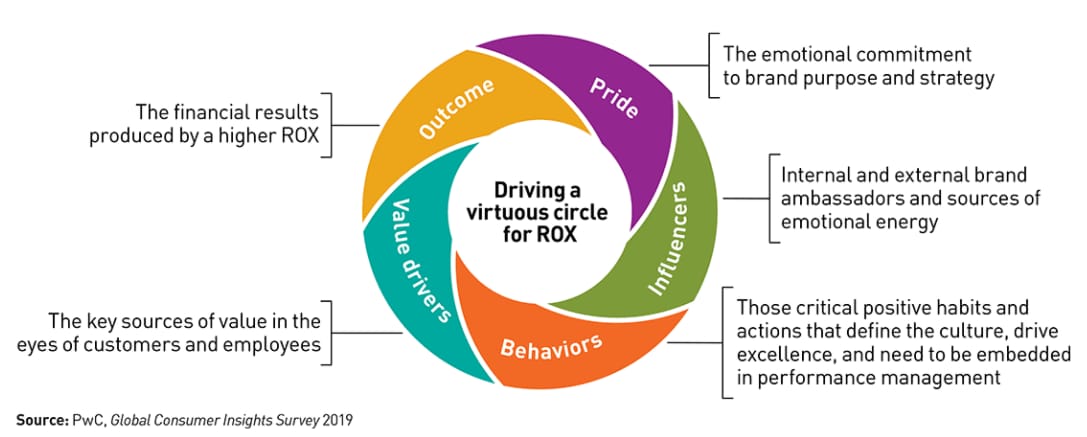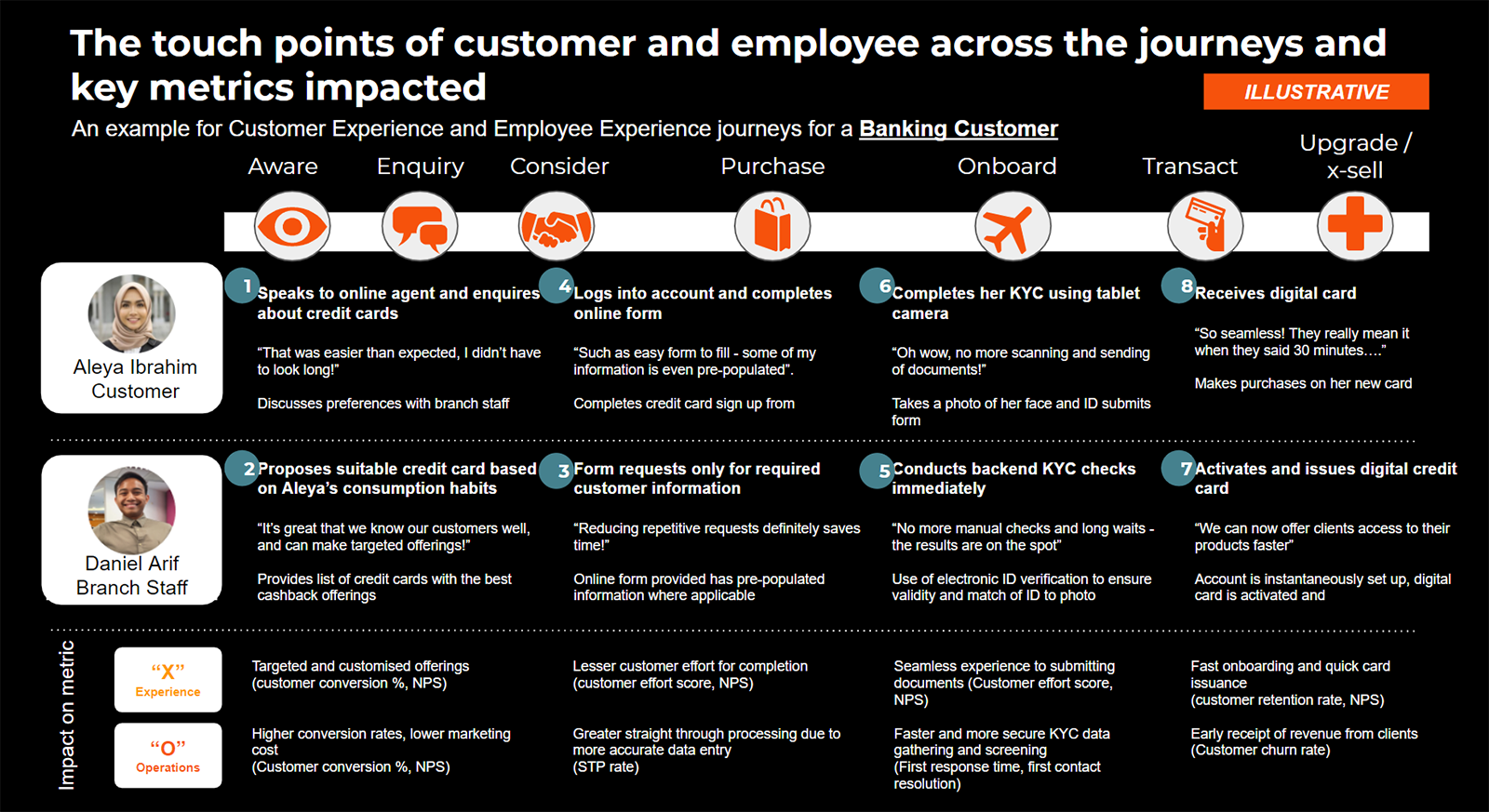{{item.title}}
{{item.text}}

{{item.text}}
Return on Experience, what we call ROX, is a holistic approach to understanding and increasing the value of your investments across customer experience (CX), employee experience (EX) and leadership experience (LX).
ROX is dynamic, company-wide and leverages interdependencies among existing business systems and highlight the connections from multiple specific metric.
Leaders need to start focusing on the outer connected of “alive” business ecosystem development.
These elements clearly involve EX just as much as CX, and they are also the components that need to be considered in building a framework for ROX. Done right, ROX will spin up a virtuous circle of benefits related to these components — and keep it spinning.
The trick is to uncover causal loops among these elements and build a model that shows how shifts in any of them affect the others.
In practice at most companies, though, ROX lies at the intersection of the roles of the chief marketing officer (CMO), chief information officer (CIO), chief human resources officer (CHRO), and chief digital officer (CDO).
At a major U.S. bank, for instance, the executive in charge of CX has recently started focusing on EX, too. At a leading consumer-goods company, the CDO is the executive who sees himself as the champion of the ROX approach.
For example, let’s look at a hotel chain that has both luxury resorts and budget business travel properties, executives might want to track such factors as reductions in employee churn over time or how often loyalty members formally recognize great employee service. The hotel chain can then aggregate and analyze those measures for their impact on CX factors — hotel occupancy figures, for instance, or customer acquisition costs.
Let’s say that analysis of the previous year’s data has shown that speed of check-in matters a great deal to business travelers. In fact, the data shows that frequency of stay depends on it. Obvious next steps to increase ROX would be to train hotel managers to staff reception adequately and encourage guests to use the chain’s mobile app to ensure that check-in is consistently quick.
That’s just the start of how a company can use data. For example, the causal loops discovered within the hotel chain’s ecosystem might uncover previously unimagined connections between retention rates for frontline employees and the pride they take in knowing they’ve helped get business guests to stay at their facilities time after time. Or, metrics might pinpoint which frontline employees are “exemplars” — that is, those who already exhibit the “critical few” behaviors — allowing leaders to evolve a new metric that tracks those behaviors among the exemplars’ direct reports.
{{item.text}}

{{item.text}}



